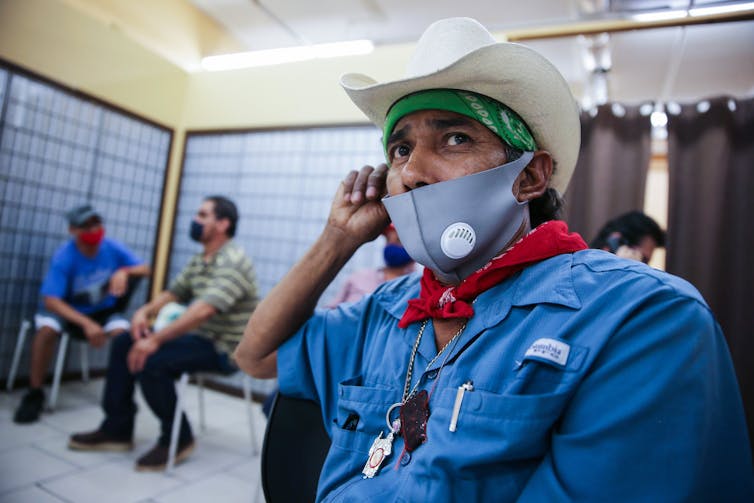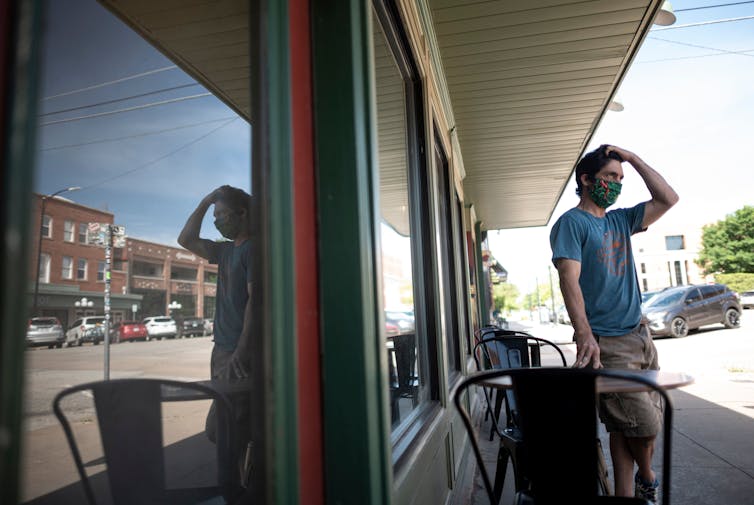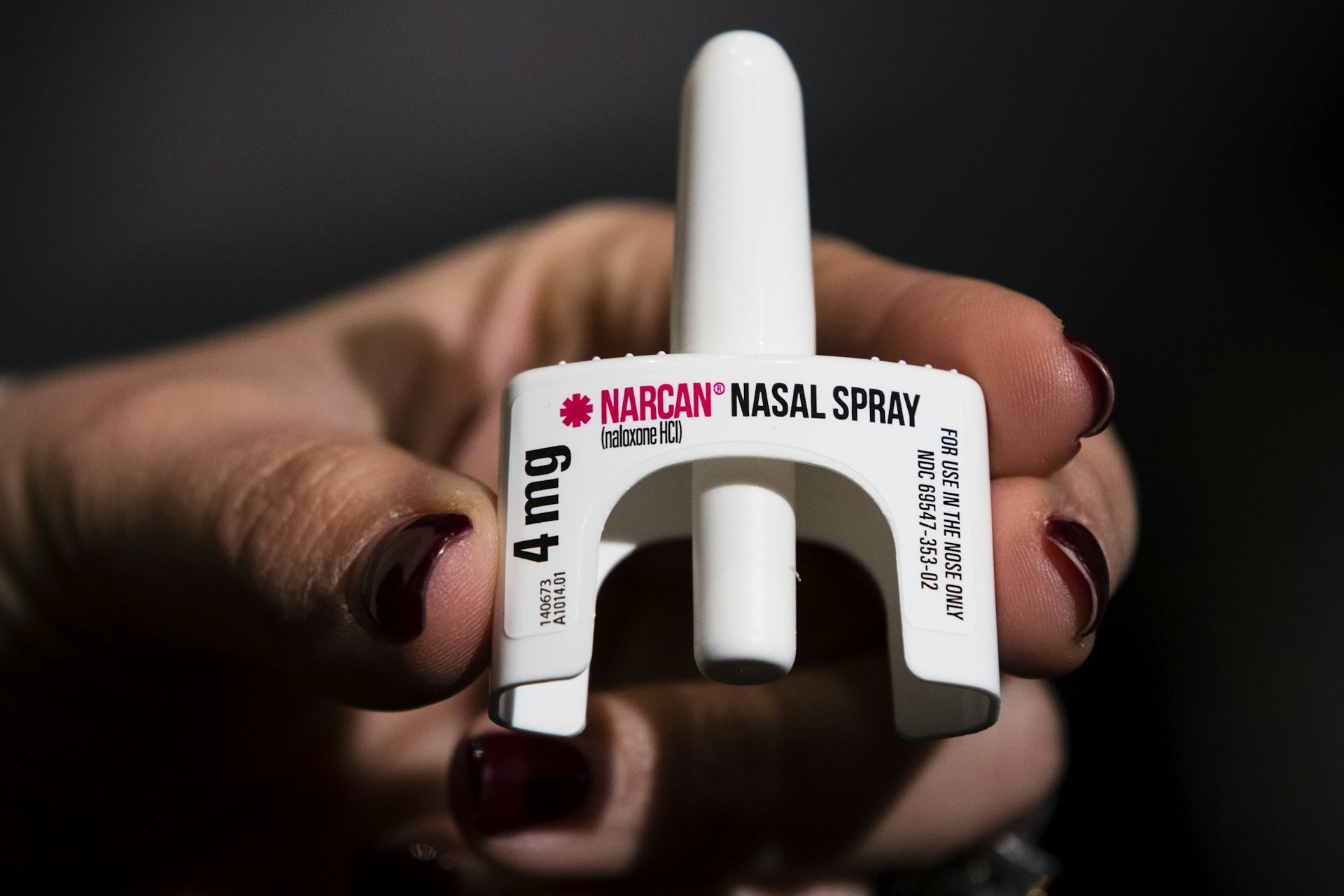In rural America, resentment over COVID-19 shutdowns is colliding with rising case numbers
Coronavirus cases have risen sharply across the Mountain West, Midwest and plains. Over 70% of nonmetropolitan counties are now "red zones," suggesting viral spread is out of control.

As COVID-19 spreads through rural America, new infection numbers are rising to peaks not seen during this pandemic and pushing hospitals to their limits. Many towns are experiencing their first major outbreaks, but that doesn’t mean rural communities had previously been spared the devastating impacts of the pandemic.
Infection rates in rural and frontier communities ebbed and flowed during the first seven months, often showing up in pockets linked to meat packing plants, nursing homes or prisons.
Even if they had no cases, many rural areas were under statewide public health orders that left businesses closed and events canceled. And that has become part of the problem today. The early compassionate and cohesive community responses to COVID-19 quickly gave way to growing anger and compliance fatigue, especially when some isolated towns didn’t see their first positive cases until summer.
That resentment toward public health recommendations, including mask-wearing, is now on a crash course with rising case numbers in the Mountain West, Midwest and Great Plains. For the fifth week in a row, rural counties witnessed a sharp increase in cases, to the point where over 70% of the nation’s nonmetropolitan counties had earned a “red zone” designation, suggesting local viral spread was out of control. The reality, though, is COVID-19 has never been “under control” in the U.S.
As professors of family medicine with experience in rural health policy and medical practice, we have been studying the barriers rural communities are facing during the pandemic and how they can solve COVID-19-related challenges.
Understanding the drivers of increasing COVID-19 cases in rural places is critical to both curtailing the current surge and limiting flareups in the future.
Why rural cases are on the rise
Several factors have contributed to the rise in rural case numbers.
The politicization of the pandemic – and of mask-wearing – has hampered both public health efforts and collaboration among businesses, community organizations and health care entities. Political tensions have given rise to misinformation, reinforced on social media, that can be difficult to turn around. If people aren’t taking protective measures, when COVID-19 does come in, it can easily and quickly spread.
In some communities, the resumption of small-town activities, such as school, church and sports events, has led to more infections. Experts have pointed to social gatherings, including the nearly 500,000-strong Sturgis motorcycle rally in South Dakota in August, as sources of the recent COVID-19 surge in the upper Midwest.
Working from home is also nearly impossible for many rural jobs. Paid sick leave may also be difficult to come by, prompting some people to choose between working while sick and isolating at home without pay. Meat and poultry processing plants and other farm industries often employ immigrants whose living and commuting realities can make social distancing difficult. Many rural places are heavily dependent on recreation and service industries. When visitors arrive from out of town, they may bring COVID-19 with them.

Local health care is already short-supplied
Pinpointing COVID-19 outbreaks early and stopping the spread can also be harder in rural areas.
Funding for rural public health departments has long been anemic, crippling their ability to test, share data and conduct contact tracing. Limited resources also constrain education and outreach efforts.
Many rural hospitals and primary care practices entered the pandemic in financial trouble and chronically short-staffed. They reside squarely at the end of the supply chain, making acquisition of needed personal protective equipment and testing supplies difficult. Rural hospitals have fewer ICU beds per capita than their urban counterparts. Lack of consistent broadband coverage can make access to telehealth difficult, as well.
These factors, compounded by caring for a population that is comparatively older, sicker and poorer, leave rural communities extraordinarily vulnerable as cases continue to rise.
How to turn the tide of rising cases
Intervening now can slow the rate of rise of COVID-19 cases in rural hot spots while simultaneously building a more robust long-term response.
To be most effective, each rural area’s unique demographics, economies and perspectives should be considered as policies are developed.
For example, allowing rural communities to exert control over their reopening and closing decisions based on local disease transmission dynamics would allow them to better balance disease mitigation with economic impacts. Some states allow rural communities with few or no cases to apply for waivers from statewide public health orders. These applications generally look at local infection data, containment measures and health care capacity.
[Deep knowledge, daily. Sign up for The Conversation’s newsletter.]
Changing the nature of the conversation around COVID-19 in the community can also help in implementing simple, effective measures like mask-wearing. When communications are personal, they may be more accepted. For example, a public service message could remind people that wearing a mask keeps your favorite business open and your grandmother healthy. Framing levels of risk in understandable terms for different types of activities can also help, such as how to exercise or socialize safely. Working with trusted local messengers, such as business owners and faith leaders, can help convey evidence-based information.

Planning is also essential. Communities need to prepare so they can get supplies, testing and treatment when needed; protect the most vulnerable community members; educate the community; and support people in isolation and quarantine. A rural regional approach to testing and contact tracing, sharing supplies and swapping staff could help bridge some of the gaps. Getting test results closer to home could decrease wait times and courier costs. Sharing resources across health care organizations could also minimize the burden of response.
3 ways to strengthen systems for the future
COVID-19 isn’t likely to be the last pandemic rural America will see. Here are three ways to strengthen rural systems for the future.
By partnering with universities and local and state agencies, communities can incorporate their unique susceptibilities into dynamic epidemiological models that could better inform local public health and economic decisions.
Aligning public health and health care measures could help governments better balance pandemic responses and ensure all parts of the community are moving toward the same goal.
Increasing broadband access and internet speeds in rural and frontier communities could also help. During the pandemic, people everywhere have appreciated the need for internet connectivity for education, remote work and purchasing goods, as well as virtual health care.
Lauren Hughes received funding from the Zoma Foundation. She is affiliated with the Rural Health Redesign Center Organization.
Roberto Silva receives funding from the Health Resources and Services Administration (HRSA) of Health and Human Services (HHS). The contents are those of the author and do not necessarily represent the official views of, nor an endorsement, by HRSA, HHS or the U.S. Government.
Read These Next
As US hunger rises, Trump administration’s ‘efficiency’ goals cause massive food waste
Despite the administration’s claim of streamlining the government to make its operations more efficient,…
Absence of evidence is not evidence of absence – and that affects what scientific journals choose to
Researchers design studies that might disprove what’s called their null hypothesis – the opposite…
How does Narcan work? Mapping how it reverses opioid overdose can provide a molecular blueprint for
Naloxone can reverse an overdose in minutes, but exactly how it does this at the molecular level has…





